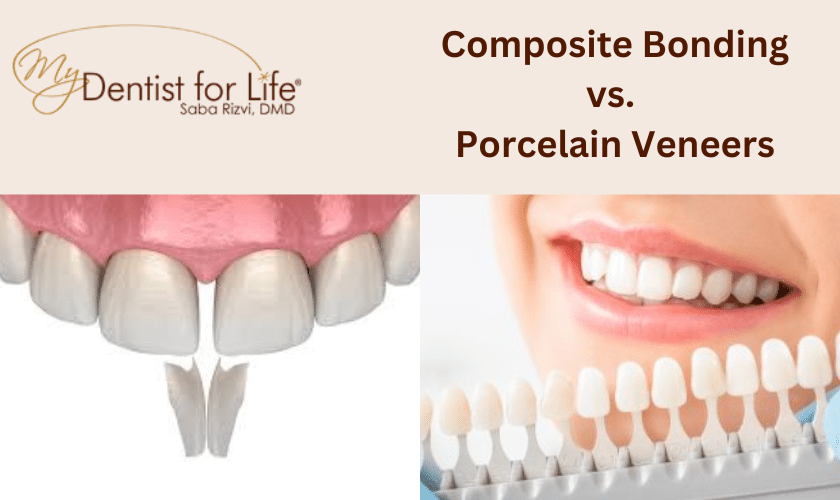ONLINE SCHEDULING AND VIRTUAL CONSULTS AVAILABLE

Should I choose composite bonding or porcelain veneers?

Cosmetic dentistry is a rapidly expanding market, making it easier than ever for people to get dental work done to improve their smiles. Two popular dental restorations are composite bonding and porcelain veneers. Both procedures involve placing dental material on the front teeth in order to alter the shape, color, and size of the teeth. In this article, we will discuss the differences between composite bonding and porcelain veneers so that you can decide which dental restoration is right for you.
What are dental veneers?
Dental veneers are thin pieces of dental material that fit over the front surface of a tooth. They are used to enhance the appearance of teeth by masking stains, chips, uneven surfaces, or gaps in teeth. Veneers come in different materials, such as ceramic and resin-based composites. Knowing the difference between these two materials is important when deciding between composite bonding or porcelain veneers for dental restoration.
What is Composite Bonding
Composite bonding is a dental restoration procedure in which dental material, usually composite resin, is applied to the surface of a tooth. The dental material is shaped and sculpted to look like a natural tooth. Composite bonding can be used to fill in chips or gaps, alter the shape or size of teeth, whiten teeth, and fix minor cosmetic issues. The advantage of composite bonding over porcelain veneers is that it is generally less expensive and does not require as much enamel removal. However, composite bonding does not last as long as porcelain veneers and may need to be replaced after several years.
Pros and Cons
When deciding between composite bonding or porcelain veneers, it is important to weigh their respective pros and cons. Composite bonding is generally cheaper than porcelain veneers and does not require dental enamel removal. However, composite bonding may have to be replaced sooner than porcelain veneers. Porcelain veneers are more expensive but provide a longer-lasting solution as they can last up to 10 years.
Conclusion
Choosing between composite bonding or porcelain veneers is a difficult decision that should be made after carefully considering the pros and cons of each option. If you are looking for a cheaper dental restoration solution with minimal preparation, composite bonding may be the right choice for you. On the other hand, if you want a more permanent solution that can last for many years, porcelain veneers may be worth the extra cost. Ultimately, it is up to you to decide which dental restoration will best meet your dental needs.
Frequently Asked Questions
Answer: Composite bonding typically lasts 3-5 years, while porcelain veneers can last up to 10 years with proper care.
Answer: The main benefit of composite bonding is that it is generally cheaper than porcelain veneers and does not require dental enamel removal.
Answer: Yes, some risks may be associated with dental veneers, such as dental sensitivity and gum irritation. It is important to discuss any potential risks with your dental professional before undergoing dental restoration.





